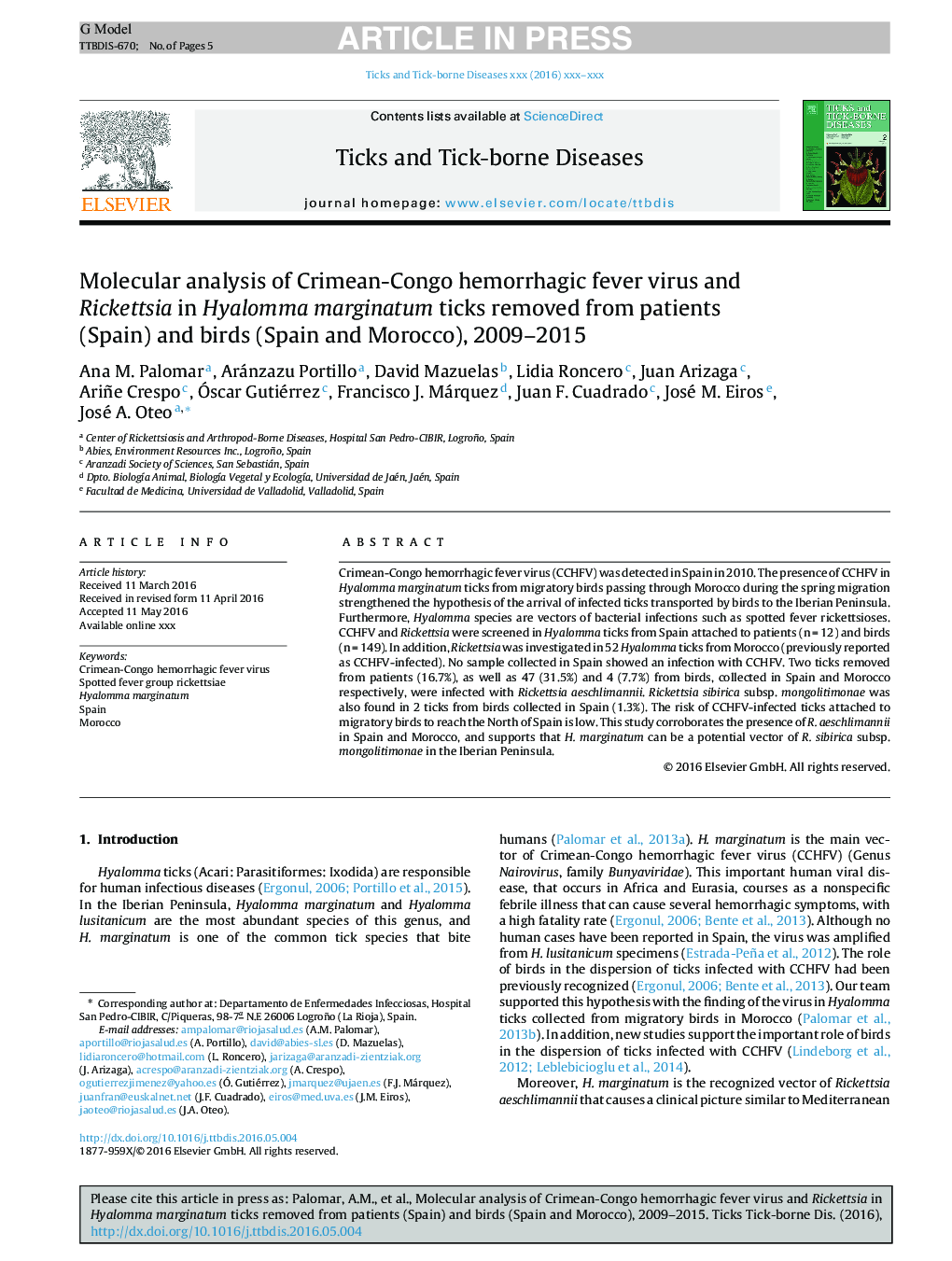| Article ID | Journal | Published Year | Pages | File Type |
|---|---|---|---|---|
| 5546421 | Ticks and Tick-borne Diseases | 2016 | 5 Pages |
Abstract
Crimean-Congo hemorrhagic fever virus (CCHFV) was detected in Spain in 2010. The presence of CCHFV in Hyalomma marginatum ticks from migratory birds passing through Morocco during the spring migration strengthened the hypothesis of the arrival of infected ticks transported by birds to the Iberian Peninsula. Furthermore, Hyalomma species are vectors of bacterial infections such as spotted fever rickettsioses. CCHFV and Rickettsia were screened in Hyalomma ticks from Spain attached to patients (n = 12) and birds (n = 149). In addition, Rickettsia was investigated in 52 Hyalomma ticks from Morocco (previously reported as CCHFV-infected). No sample collected in Spain showed an infection with CCHFV. Two ticks removed from patients (16.7%), as well as 47 (31.5%) and 4 (7.7%) from birds, collected in Spain and Morocco respectively, were infected with Rickettsia aeschlimannii. Rickettsia sibirica subsp. mongolitimonae was also found in 2 ticks from birds collected in Spain (1.3%). The risk of CCHFV-infected ticks attached to migratory birds to reach the North of Spain is low. This study corroborates the presence of R. aeschlimannii in Spain and Morocco, and supports that H. marginatum can be a potential vector of R. sibirica subsp. mongolitimonae in the Iberian Peninsula.
Keywords
Related Topics
Life Sciences
Agricultural and Biological Sciences
Animal Science and Zoology
Authors
Ana M. Palomar, Aránzazu Portillo, David Mazuelas, Lidia Roncero, Juan Arizaga, Ariñe Crespo, Ãscar Gutiérrez, Francisco J. Márquez, Juan F. Cuadrado, José M. Eiros, José A. Oteo,
